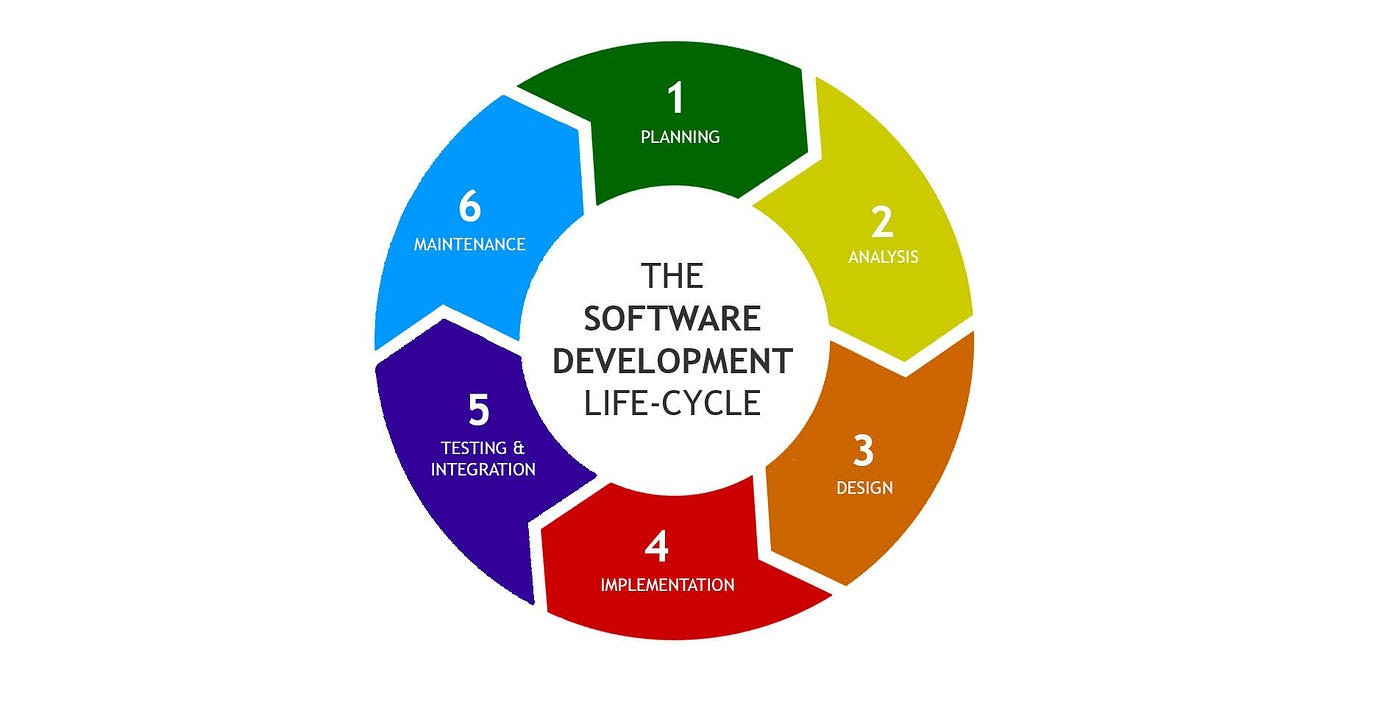


Introduction:
In the realm of software development, the Software Development Life Cycle (SDLC) stands as a cornerstone, ensuring the efficient and successful creation of software applications. This systematic framework provides a roadmap, guiding projects from conception to completion within specified timeframes, budgets, and quality standards. In this blog, we will unravel the pivotal role played by SDLC and delve into how it underpins the triumph of software development endeavors.
1. Structured Approach:
SDLC offers a meticulously planned and structured approach to software development. It delineates a series of phases and activities, escorting developers through the entire journey — from gathering initial requirements to deployment and maintenance. This meticulous methodology aids in resource management, establishes realistic project expectations, and minimizes risks. By doing so, it enhances overall project management and ensures a smoother development process.
2. Quality Assurance:
Quality is the bedrock upon which every successful software application is built. SDLC incorporates a spectrum of testing and quality assurance activities, including unit testing, integration testing, and user acceptance testing. By adhering to rigorous testing practices, developers can spot and rectify defects in their nascent stages. This early identification guarantees that the final product aligns with the desired quality benchmarks, fostering reliability and user satisfaction.
3. Collaboration and Communication:
Effective collaboration and communication are the linchpin of triumphant software development ventures. SDLC fosters close collaboration among team members, stakeholders, and clients throughout the development process. Through regular meetings, status updates, and feedback sessions, transparency is upheld. This collaborative ethos facilitates the swift identification and resolution of issues, nurturing a cohesive environment conducive to successful project outcomes.
4. Risk Management:
SDLC integrates proactive risk management practices, enabling the identification and mitigation of potential pitfalls. By conducting comprehensive risk assessments and implementing apt risk management strategies, development teams can preemptively minimize the impact of risks on project timelines and budgets. This preemptive approach ensures that potential obstacles are nipped in the bud, preserving the project's trajectory toward success.
5. Scalability and Maintenance:
In the ever-changing landscape of technology, software applications must remain adaptable and scalable. SDLC recognizes scalability and maintenance as pivotal elements of the development process. It ensures that the software architecture is designed with flexibility in mind, accommodating future enhancements and updates seamlessly. Moreover, SDLC provides steadfast guidelines for ongoing maintenance and support, assuring that the application stays stable, secure, and up-to-date.
Conclusion:
In the tapestry of software development, SDLC stands tall as a linchpin, weaving a structured and systematic approach from conception to deployment and beyond. Embracing SDLC practices equips organizations with superior project management, elevated quality assurance, seamless collaboration, and proactive risk mitigation. Ultimately, SDLC empowers development teams to craft high-quality software applications, exceeding client expectations and propelling business triumphs.
0 Comments